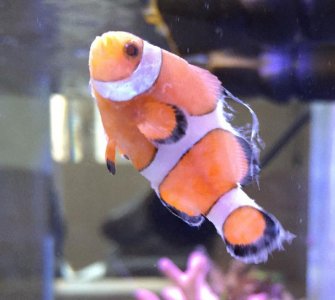Hi!
This is a my second post about my sick clownfish. Whatever he has has progressed and he doesn't look good at all (see attached picture).
I am going to loose the fish so I need to know WHAT it is that will kill him and how long I have to stay fallow until I can safely add another fish.
BTW I do have another fish in the tank. A small yellow goby (Gobiodon okinawae). So far this guy looks ok. Although I rarely see him.
EDIT: The fish died as I was writing this post.
This is a my second post about my sick clownfish. Whatever he has has progressed and he doesn't look good at all (see attached picture).
I am going to loose the fish so I need to know WHAT it is that will kill him and how long I have to stay fallow until I can safely add another fish.
BTW I do have another fish in the tank. A small yellow goby (Gobiodon okinawae). So far this guy looks ok. Although I rarely see him.
EDIT: The fish died as I was writing this post.
Attachments
Last edited:

